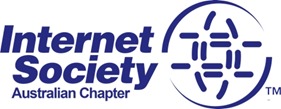Here is a little known fact. In December, 2007 the office of the Prime Minister and Cabinet obtained responsibility for privacy and freedom of information in Australia. From the Attorney-General’s Web site:
“Under the Administrative Arrangements Order of 3 December 2007, responsibility for privacy and freedom of information, including administration of the Privacy Act 1988 and the Freedom of Information Act 1982, was transferred from the Attorney-General’s portfolio to the portfolio of the Prime Minister and Cabinet.“
I’m still having trouble trying to figure out why this relatively important responsibility was shuffled through the portfolios. Deeper in the A-G’s web site more references, but no rhyme or reason.
Now, you can read for yourself what the Department of the Prime Minister and Cabinet does.
The DPMC web site also lists a number of documents and guidelines relating to the freedom of information. You’ll notice also that at the same time responsibility was transferred from the Attorney General to the DPMC’s office, the “Exemptions sections in the FOI Act” was updated also.
In case you were wondering here is a brief overview of your rights under the Freedom of Information Act. I find it curious that this occurred during a change of government.
ACTA Spotlight
Oh, in unrelated matters, here is a look at some of the issues being discussed behind closed doors as part of the Anti-Counterfeiting Trade Agreement (you will recall this from my previous posts). Some items you should care about:
- Issues related to Customs searches of material which infringes IP rights without notification from the right owner
- Issues related to judicial authorities having the authority to order the seizure of proceeds of crime for IP offences
- Issues related to strengthening border measures as a key element of reducing the international trade in material which infringes IP rights
Here’s the Government’s official say-nothing web site. Turns out there was a DFAT briefing session on this in October last year. I wouldn’t have minded being at that briefing. There’s an excellent summary (highly recommended reading) of the briefing by Nic Suzor which is very detailed. Some points to consider:
- “It was repeatedly stressed that Australia was not bound to sign – we negotiate ‘without prejudice’ – and that the decision whether to sign or not will not be made until after the text has been released.”
- “It was noted from the floor, however, that it is sometimes extremely difficult for parties who have been heavily involved in the negotiation process to refrain from signing after negotiations have been concluded, which implies that public consultation after negotiation will be too late to be effective”
- “Dr Rodgers repeatedly stressed that, without disclosing the draft text, we could ascertain the boundaries of the agreement by ‘reading between the lines’ of the calls for comments posted on the DFAT web site in preparation of each round”
A few organisations have chased the Government for more information including the Internet Industry Association.
My concern is (and obviously shared) that by the time this agreement’s text has been finalized there will be no opportunity for constructive public consultation. Clearly it’s hard for the public to respond to DFAT’s “calls for comments” when the public is unaware of the context around such calls. More details can be found here. Here is a link to the leaked 2007 ACTA discussion paper.


